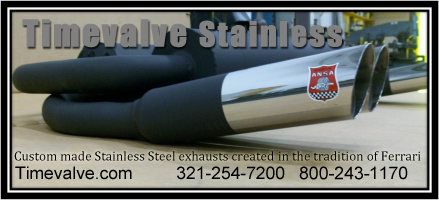Buffing and Calling

3/13/00 Buffing and Calling
I spent the day buffing more aluminum pieces at the CBS construction shop. I wanted to give Rudi two complete sets of vertical pieces so we could make two grilles. This will give us a margin of error just in case we make a mistake on the first one. I spent five hours in front of that buffing wheel successfully covering myself in aluminum dust and buffing rouge. I couldn’t wait to take a shower!

The rest of the day was spent on the phone researching parts for my car. François removed a bearing cup from one of my spindles and replaced it with a good one he had in his shop. It was the only one that was not usable, but all the needle bearings will need to be replaced. I called Partsource, and discovered Geoff had a full king-pin rebuild kit available, and all the individual parts, and my needle bearings for $0.80 cent each. Considering I would need 120 bearings, I wanted to understand why I would need to spend $96 dollars just for these little bearings.
Rudi measured a new bearing from François with his micrometer. I figured it was better to have a machinist measure something accurately rather than have me screw up such a precise number. The measurements were:
.0985 inch diameter
.6208 inch length
Most American bearing manufacturers seem not to stock this size needle bearing, and in order to make a special run of this size, I would have to purchase a minimum order of 1000 pounds! That would probably be enough bearings to rebuild every Ferrari with these bearings in existence! A thousand pounds of bearings would also cost me far more than the hundred bucks to buy the 120 from Partsource. So far, Partsource was the cheapest source.
Speaking with an American bearing sales representative, I was given a good tip on hunting down this elusive bearing size. His recommendation was to convert this measurement to a metric unit, and try a European manufacturer. When I did the conversion, I got:
2.5 mm diameter
15.8 mm height
A German company had this particular size in stock, and now it is my job to see how I can get my hands on a few of these.

I also had to make some calls about fuel lines for the Ferrari. The steel fuel lines on my car are pretty rusty, and it doesn’t make any sense to try and reuse them. Rebuilding the carburetors, and coating the gas tank will be useless if rust continues to come from the fuel lines. I want to replace these line with stainless steel so that I will never have to worry about this again. Ferrari used a special aircraft style flexible hose that mates with the steel lines with a special fitting. These fittings fit inside the steel line, and is silver soldered in place. The critical measurement will be the inner diameter of the replacement tube, not the outer diameter, as most tubing is measured. I called “Classic Tube” in NY to try and get a tube close to my 0.340 inch inner diameter rusty steel tube, and their 3/8 inch stainless tube has an i.d. of 0.317 inches. This tube is only 0.023 inches narrower than the stock Ferrari tube. I called Francois to see how we could make this replacement tube fit, and he suggested milling the old fitting down the 0.023 inches to fit inside the new tube. I called “Classic Tube” back and ordered 16 feet of stainless steel 3/8 inch tubing to fabricate the send, and return, fuel lines in my car.
Previous Restoration Day
Next Restoration Day
Ferrari Home Page
www.tomyang.net




